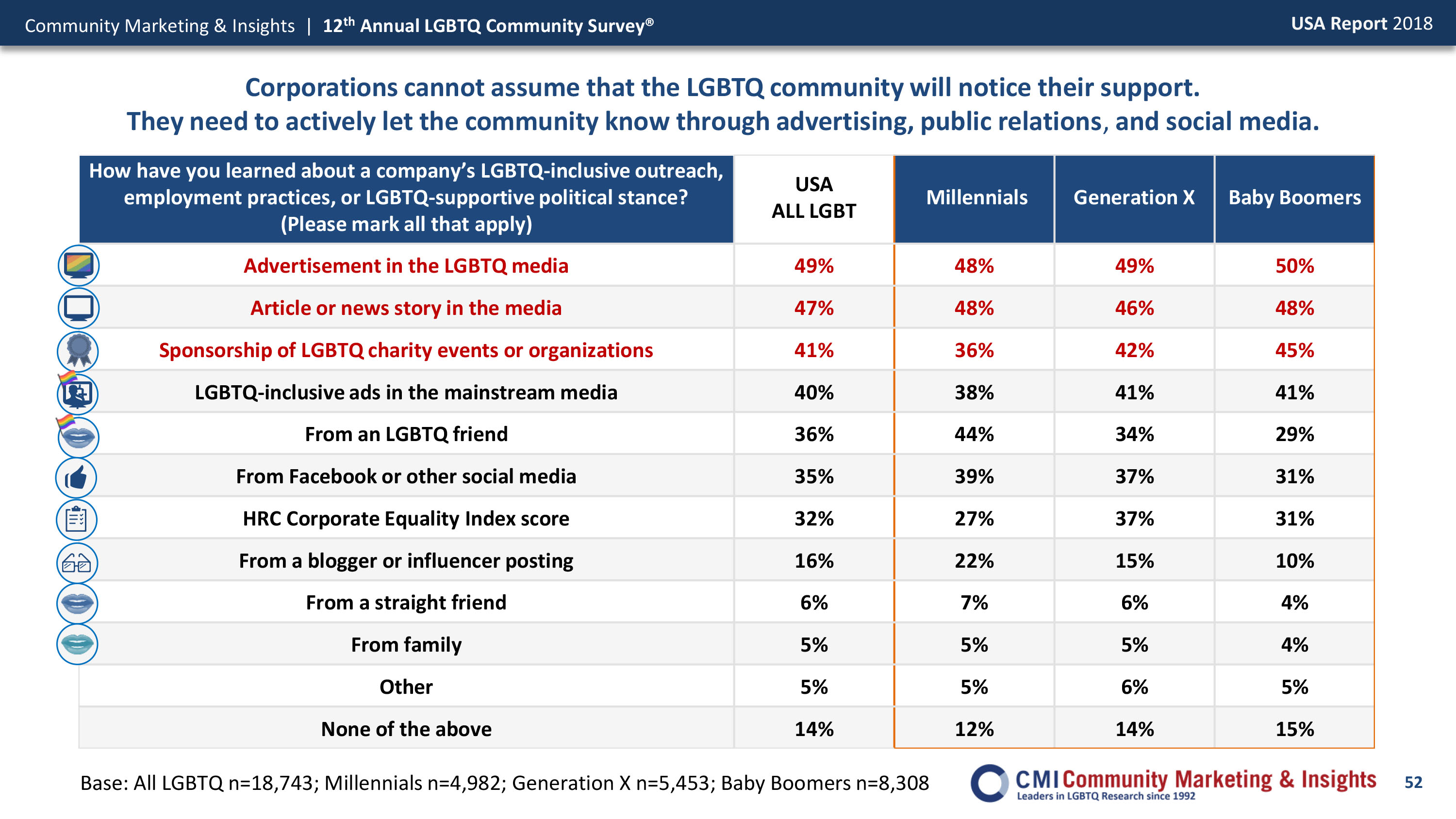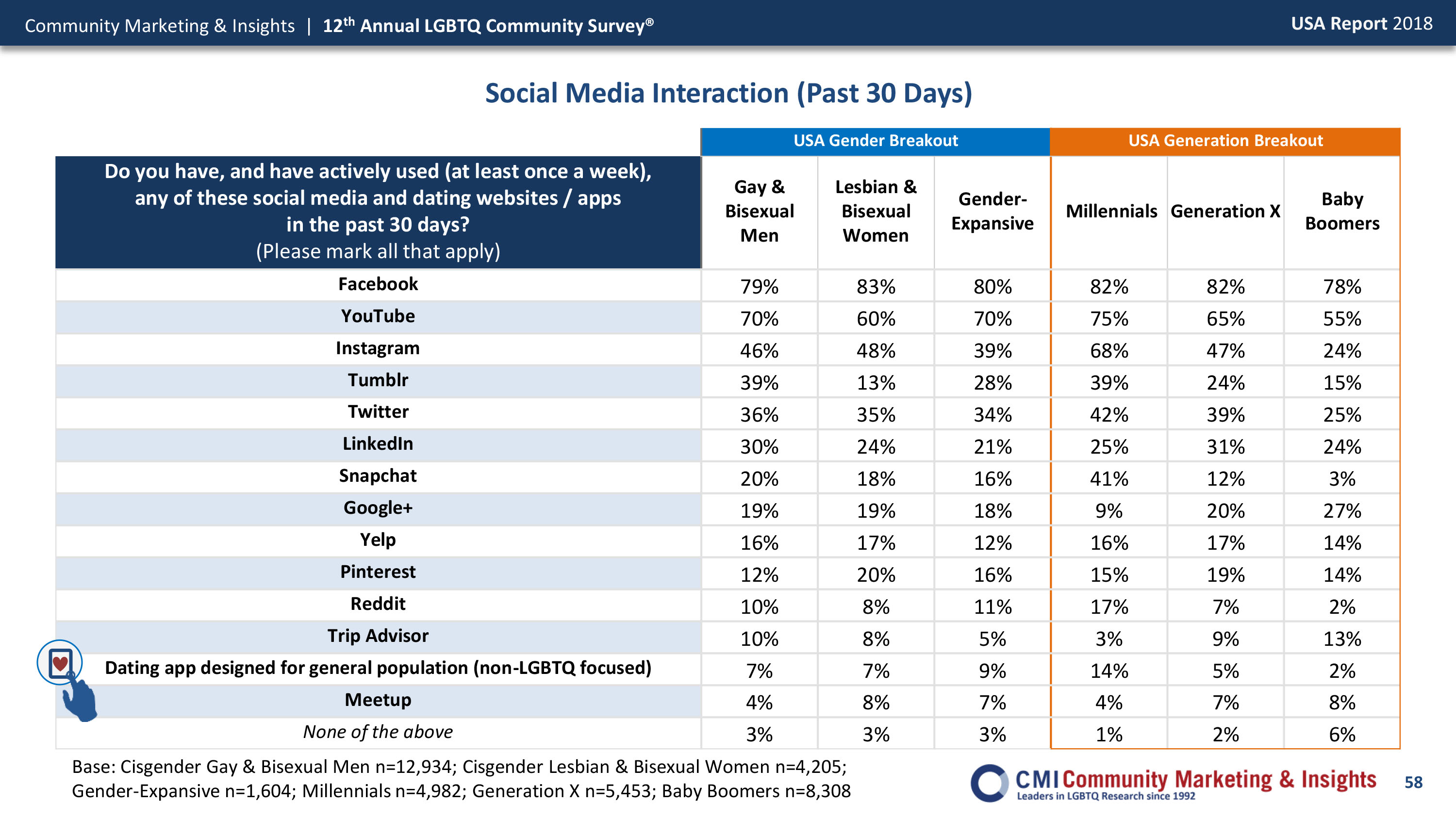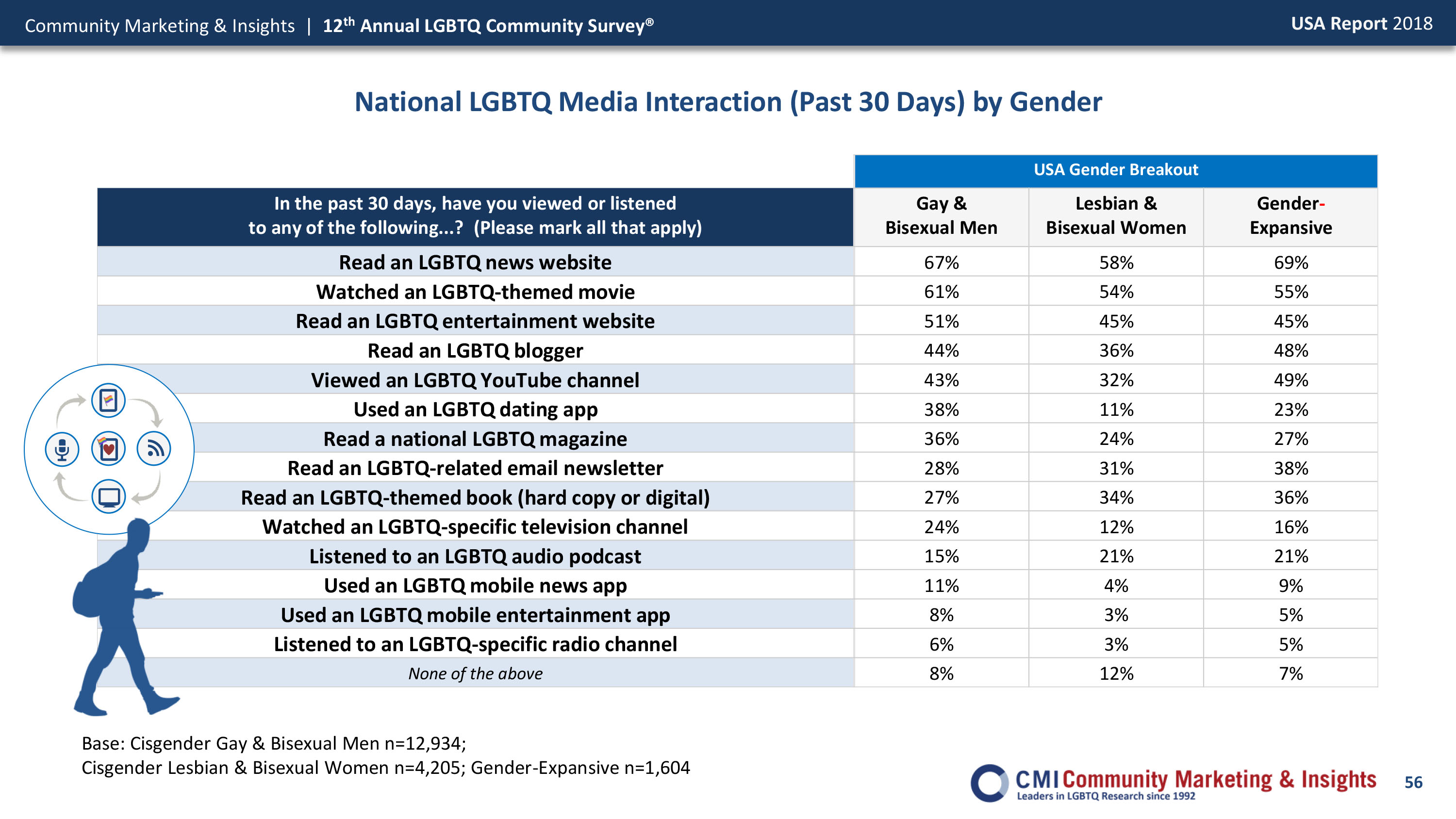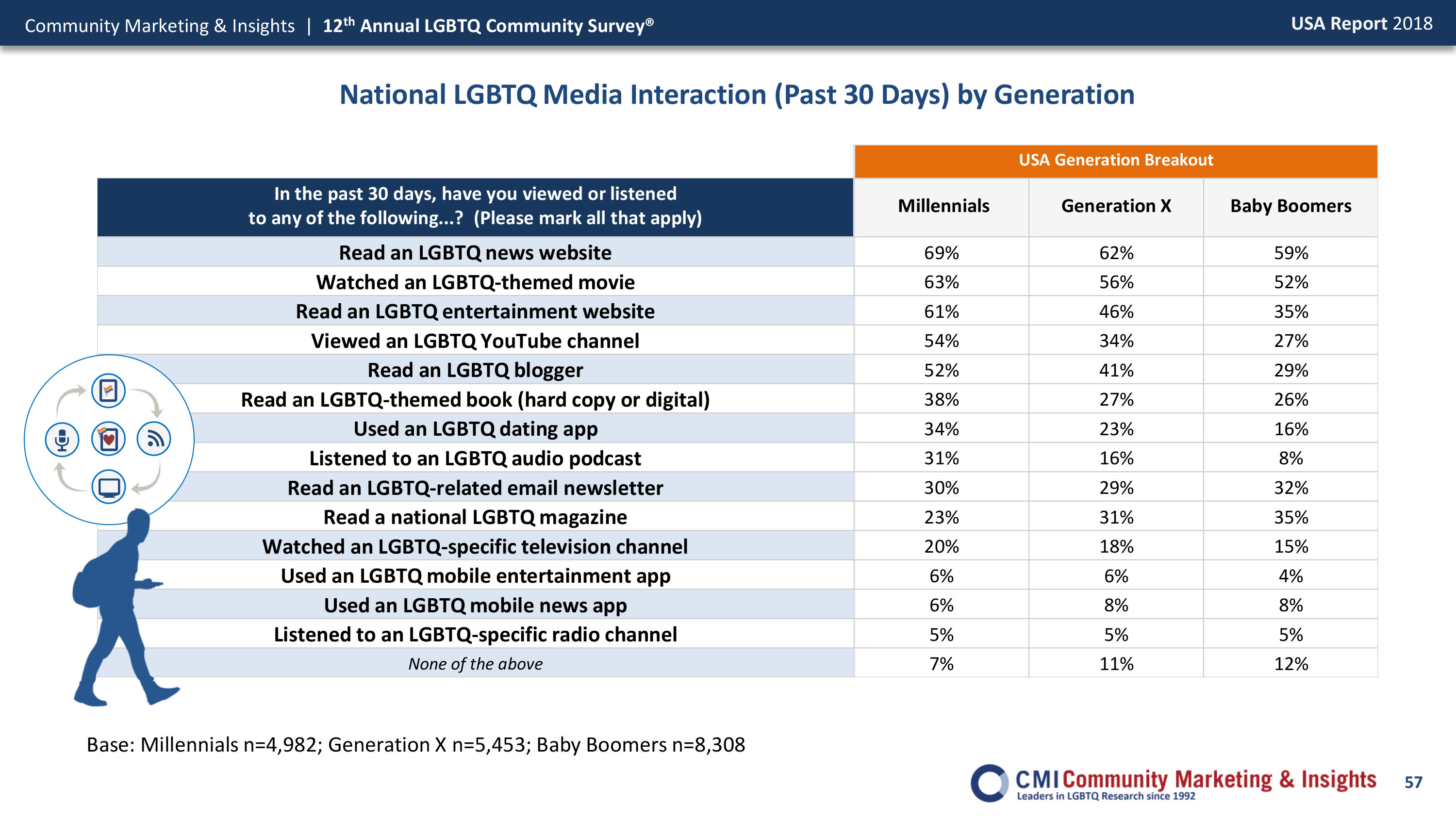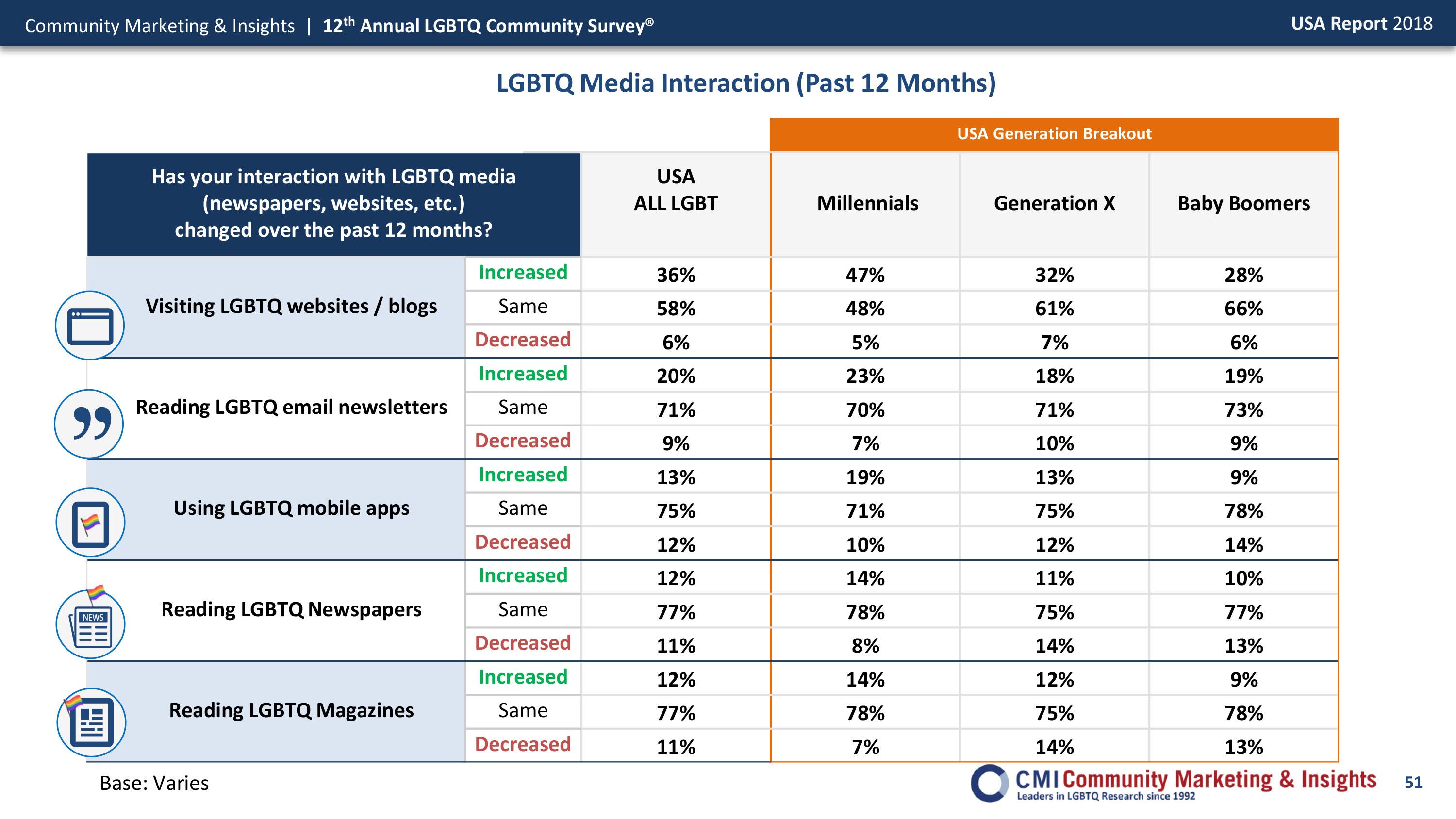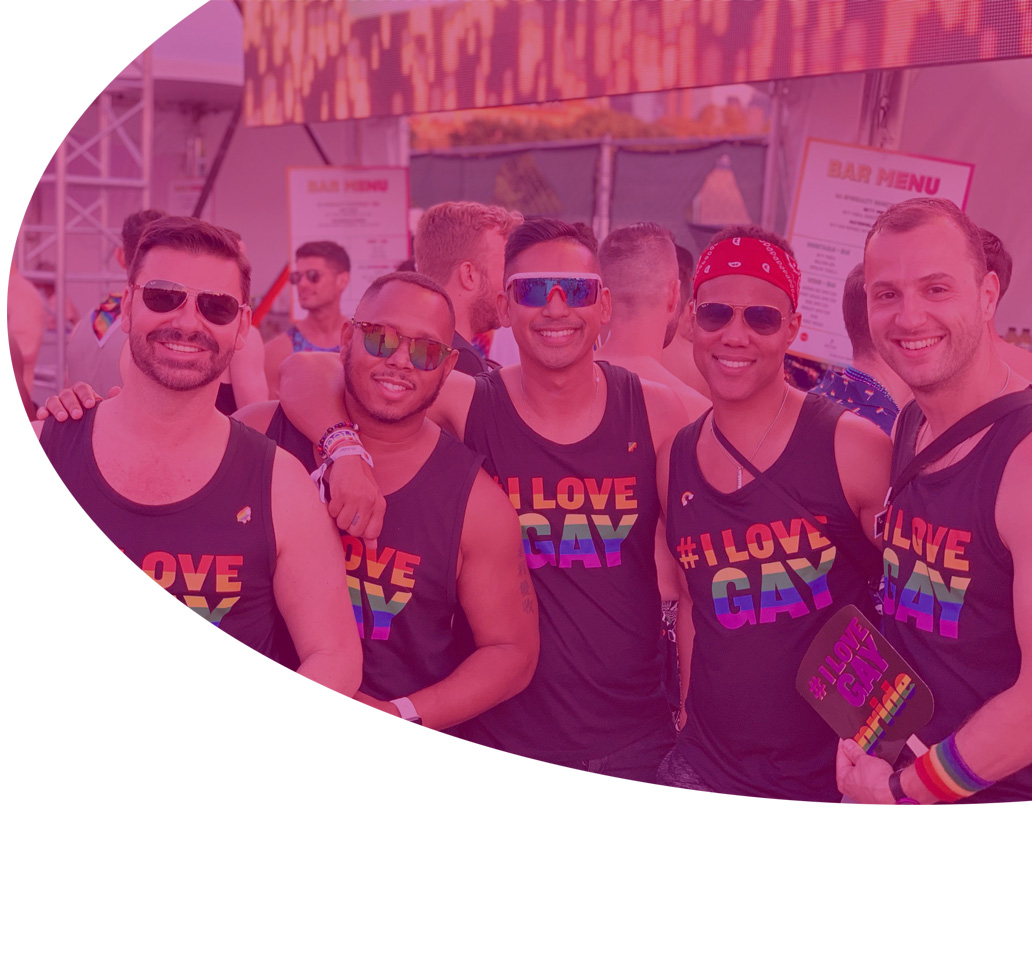LGBTQ Media - Power, Performance & Perception
HOME | Blog | LGBTQ Media - Power, Performance & Perception
Part 1: POWER
 A lot has evolved over the years when it comes to online media. Starting with bookmarking our favorite websites and then moving to search, relying on Google, Yahoo and Bing to find the best and most relevant content at that moment in time. Today, we select what we choose to read and view primarily based on what our friends are reading and viewing on social media. The POWER has shifted! Where once the front page of a website determined how you found relevant content, search soon began to shift that power away from a well-indexed website's front page to the top 10 results on Google. But that evolution has continued to shift, and has placed the dominance in HOW & WHAT most of us read and view onto Facebook, LinkedIn, Instagram, YouTube and Twitter.
A lot has evolved over the years when it comes to online media. Starting with bookmarking our favorite websites and then moving to search, relying on Google, Yahoo and Bing to find the best and most relevant content at that moment in time. Today, we select what we choose to read and view primarily based on what our friends are reading and viewing on social media. The POWER has shifted! Where once the front page of a website determined how you found relevant content, search soon began to shift that power away from a well-indexed website's front page to the top 10 results on Google. But that evolution has continued to shift, and has placed the dominance in HOW & WHAT most of us read and view onto Facebook, LinkedIn, Instagram, YouTube and Twitter.
The POWER of decision making for the media we consume is NOT the website's front page, and is only partially in search. The POWER is with what our friends, colleagues and others we follow are paying attention to and what these folks are engaged with in terms of their comments, likes and shares. This is the reason that Facebook and Google take the lion's share of online revenue today. This is also the reason that influencers have become a more important part of an advertiser's marketing mix, as they are actively engaged in this space that is now the #1 source of visibility and website traffic for content in all its forms - editorial, photos & videos.
POWER - if you're promoting your product or service online, you want to be where the source of media power lies! This power is now primarily in the art & the strategy of Conversation, via social media... not with the website and not just with search.

The science behind this is proven based upon one analytic almost all websites have access to today - the Pages Per Session. What was once a minimum of 10 on most websites in the early 2000's, with online users sticking around a single website for sometimes 30 minutes or more reading content, viewing other member profiles, leaving messages on message boards and perhaps even shopping for products related to that website's theme, is now below 2.0 for nearly all websites today. BELOW 2.0! What does this mean? It means that for nearly every single online viewer today, they are reading a headline on social media or from search and clicking over to read the article, while rarely ever sticking around the website that served the article to view more. They're not bouncing over to the website's front page and they're not clicking through to additional, related articles. If they were, the Pages Per Session would be over 2.0.
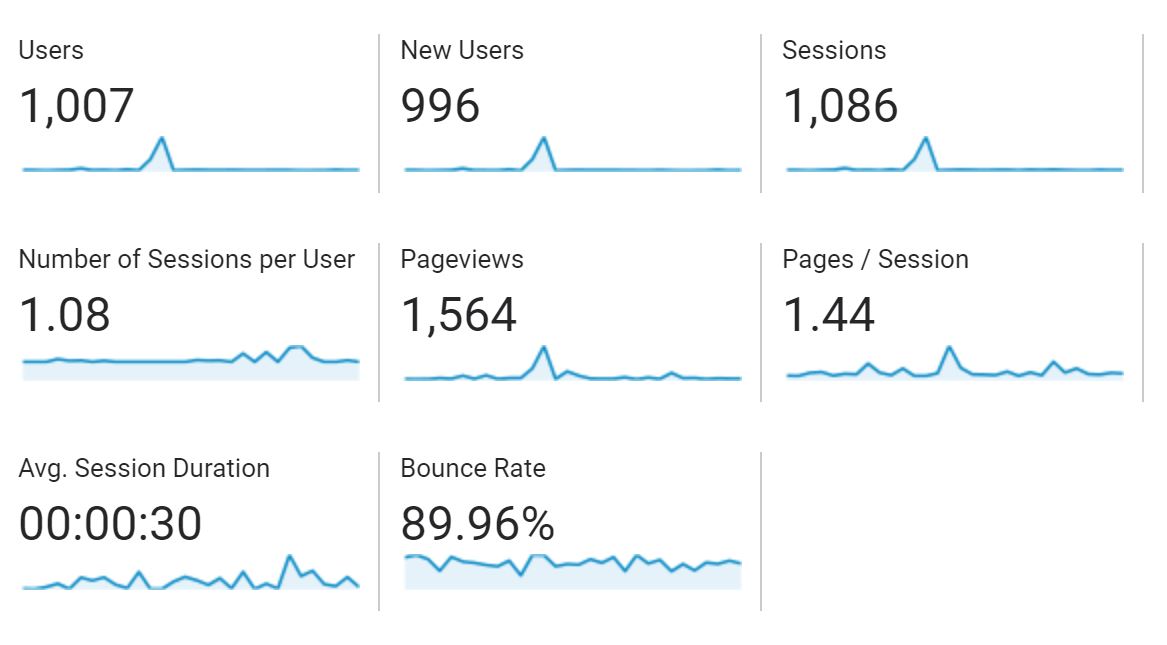
Now some websites are exceptions to this, but most are not. This trend is what has pushed the concepts of snappy, eye-catching headlines, with some websites even buying traffic on Facebook when it was cheap, and earning revenue on the upsell of the multiple banner ads on each article, which they were able to monetize at a profit. This business model has faded away, as Facebook has gotten more expensive to advertise on, and has also reduced how a media company's organic, free content is now viewed on the Facebook News Feed.
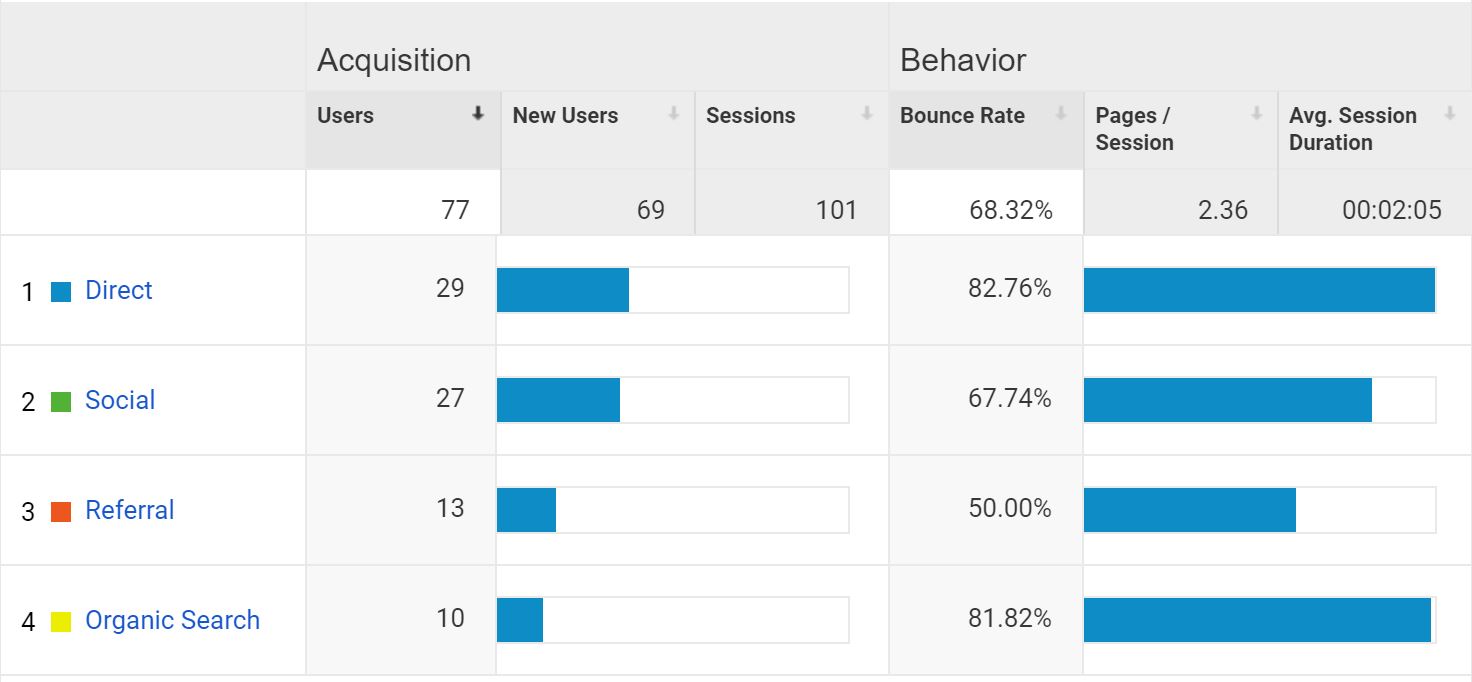
The top sources of website traffic today are now Facebook's News Feed (from personal profiles or from a hyper-targeted, paid advertising campaign), Twitter, LinkedIn and Instagram (based on being creative with a profile's website link or also doing a hyper-targeted, paid advertising campaign).
Our business model here at Pink Media is to keep our clients visible in this Conversation Space, understanding that maximum visibility and success means treating these social mediums as real people, staying engaged and interested in them so that they'll stay engaged and interested in us!
Part 2: PERFORMANCE
Dollar for dollar, your ad spend should be where it performs best. Being able to hyper-target your exact LGBTQ demographic online via search, banner ads, e-mail campaigns and even social media ads, how else can you succeed in this Conversation Revolution via social media?
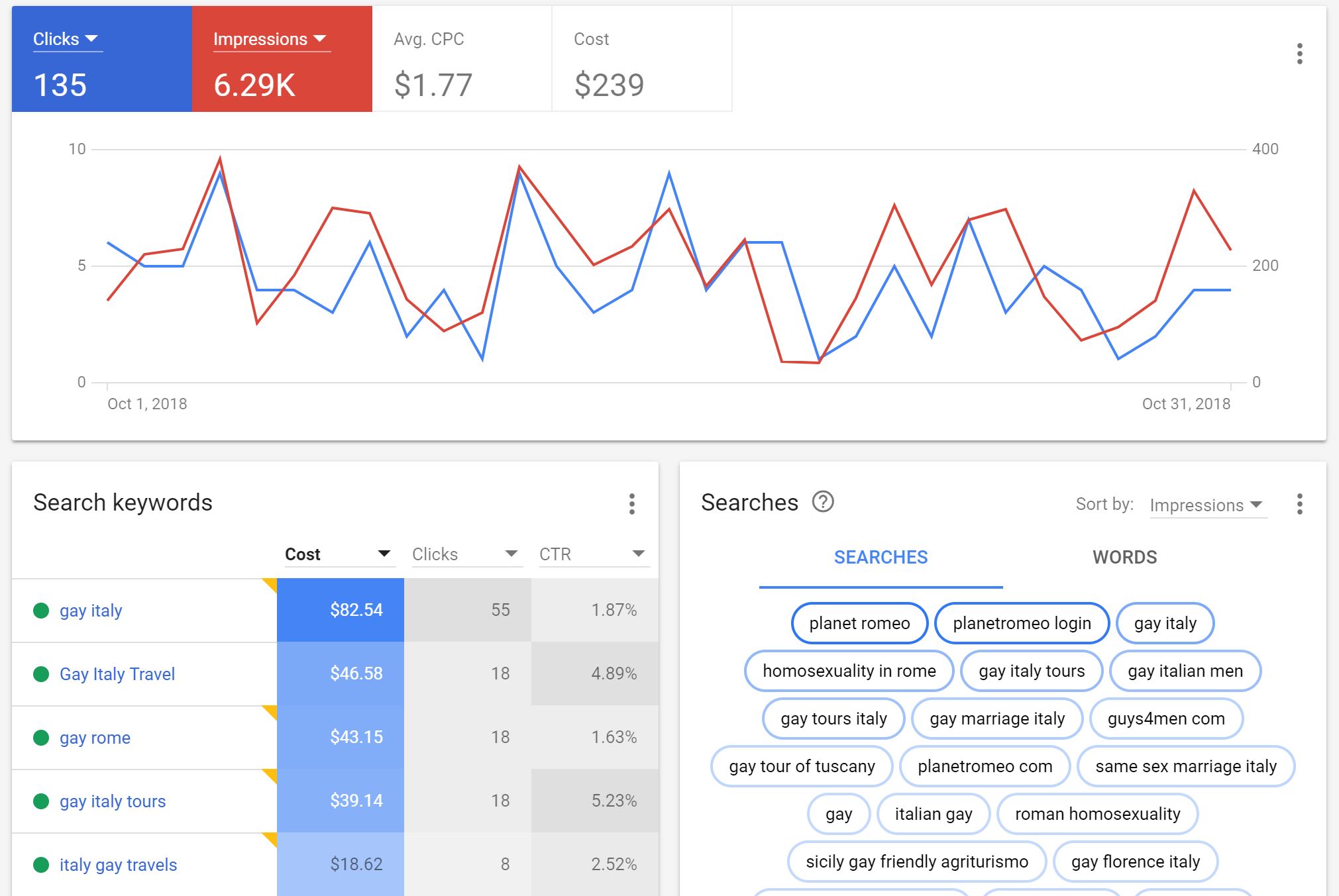
Your success lies in following a strategy that sees individuals on social media as real people. If you show interest in them, they'll show interest in you. Staying engaged with your followers and your audience, rather than just posting content and assuming they'll be interested in what you have to say, is the key to success in today's conversational, social media environment. Unless, of course, you or your brand has celebrity status of some sort, which most of us do not. Celebrities don't need to stay engaged... people will be hanging on their every word (or photo or video post).
Most importantly, how do you know if you're succeeding on social media or not? We find this benchmark study, updated annually by RivalIQ, as a good place to start.
https://www.rivaliq.com/blog/2018-social-media-industry-benchmark-report/

It talks a lot about engagement rate, and how that relates to impressions. In laymen's terms, is anyone seeing your content, and if so, do they care? Do they like what they see and let you know? Or more important, do they like what they see and let their friends and followers know? Between this study, and from interviewing a wide variety of LGBTQ people, influencers and organizations using social media, we have concluded that for an engaged business, we should be seeing an engagement rate of 1-10% for all of our social media posts, on all mediums!
Also important is the concept of a symmetrical social media relationship compared with an asymmetrical one. Symmetrical relationships mean I follow you and you follow me. With Facebook and LinkedIn personal profiles, this is the default, and is one of the top reasons they are both so successful in reaching their specific audiences. Instagram is a hybrid between the two, where you can follow a maximum of 7,500 and an infinite number can follow you back... thus, it's more of a "look at me" style of social media very popular with celebrities and influencers. Twitter is asymmetrical, meaning that you can follow who you want and they won't necessarily be following you back. To succeed in this asymmetrical world, the key is to turn those one-way relationships into two-way, symmetrical and engaged relationships. That's the secret to success on Twitter!
 Instagram: - RivalIQ shows an average engagement rate of 1.73%. For influencers, this is the #1 social media they gravitate towards. From our interviews, we have found their engagement rates ranging from 5-10%. So for this analysis, we'll use 5% for Instagram. That means that for every 50 likes and comments combined you see on a post, they probably received 1,000 impressions or views of that post.
Instagram: - RivalIQ shows an average engagement rate of 1.73%. For influencers, this is the #1 social media they gravitate towards. From our interviews, we have found their engagement rates ranging from 5-10%. So for this analysis, we'll use 5% for Instagram. That means that for every 50 likes and comments combined you see on a post, they probably received 1,000 impressions or views of that post.

Performance here on Instagram is much more directly related to follower count. With a maximum of 7,500 one can follow, it becomes an art form for a business or brand to become more of a "celebrity" with a larger than 7,500 following. To achieve this, you have to have something to say that is strong enough for folks to follow you without you needing to follow them back. To succeed here is not about showing interest in others as much as it is standing out and giving your followers a strong reason to pay attention to you and your visually-focused message.
 Facebook: - RivalIQ shows an average engagement rate of 0.16%. This would be from a Facebook business page, which typically receives minimal visibility, unless you pay and use a hyper-targeted audience... then it performs incredibly well. The reality is that the #1 source of Facebook visibility and traffic to your website is from Facebook personal profiles, where individuals are engaged with and sharing your content with their friends, family and colleagues (maximum 5,000). For this analysis, we'll simply use an engagement rate of 1%, which means that for every 10 likes and comments you see on a post, they probably received 1,000 impressions or views of that post.
Facebook: - RivalIQ shows an average engagement rate of 0.16%. This would be from a Facebook business page, which typically receives minimal visibility, unless you pay and use a hyper-targeted audience... then it performs incredibly well. The reality is that the #1 source of Facebook visibility and traffic to your website is from Facebook personal profiles, where individuals are engaged with and sharing your content with their friends, family and colleagues (maximum 5,000). For this analysis, we'll simply use an engagement rate of 1%, which means that for every 10 likes and comments you see on a post, they probably received 1,000 impressions or views of that post.

 LinkedIn: - LinkedIn is more recent in terms of being a strong, viable social media platform in today's world. Now that they've upgraded the features in their social news feed, they've become today's business-to-business social media platform of choice! From our experience, an engagement rate of 1% is typical, while a successful post can achieve as high as 5-10% engagement rate.
LinkedIn: - LinkedIn is more recent in terms of being a strong, viable social media platform in today's world. Now that they've upgraded the features in their social news feed, they've become today's business-to-business social media platform of choice! From our experience, an engagement rate of 1% is typical, while a successful post can achieve as high as 5-10% engagement rate.

 Twitter: - RivalIQ shows an average engagement rate of 0.046%. This is an incredibly low number, which we attribute to the fact that there are two paths a post on Twitter can go by. One is the generic post of a media headline, or perhaps an Instagram photo posted onto Twitter, or a Facebook post placed on Twitter. All of these Tweets and more are typically just filler from a non-engaged user, having no real photo to catch a person's interest, and having 280 characters of text that are not designed to appeal to nor engage with their followers. These drag the average WAY DOWN!
Twitter: - RivalIQ shows an average engagement rate of 0.046%. This is an incredibly low number, which we attribute to the fact that there are two paths a post on Twitter can go by. One is the generic post of a media headline, or perhaps an Instagram photo posted onto Twitter, or a Facebook post placed on Twitter. All of these Tweets and more are typically just filler from a non-engaged user, having no real photo to catch a person's interest, and having 280 characters of text that are not designed to appeal to nor engage with their followers. These drag the average WAY DOWN!
Twitter - the only social medium that is infinitely scaleable as a symmetric, two-way relationship, with infinite possibilities in terms of potential reach, engagement and impressions. You can follow 100,000+ and 100,000+ can follow you!

The 2nd path for a post on Twitter is by an engaged user, using photos or video or a hyperlink with image as their primary visual, and creating text with hashtags and connections to other Twitter profiles that are a part of the story they're trying to tell. From our experience, these posts receive a minimum 1% engagement rate, and can be as high as 10%. At 1%, this means that for every 10 likes, comments and ReTweets, an average of 1,000 people had the post appear in their Twitter News Feed.
 Where are you at with your Tweets? Take a look by going to this free analytics tool provided by Twitter at https://analytics.twitter.com.
Where are you at with your Tweets? Take a look by going to this free analytics tool provided by Twitter at https://analytics.twitter.com.
When following this 2nd path on Twitter, with well constructed Tweets and staying engaged with your followers, the numbers game of success by having the most followers doesn't always apply here. On Twitter, performance has much less to do with follower count and much more to do with the strategy used. We've had Tweets from profiles with only 500 followers receive 10,000+ impressions and a 5% engagement rate simply based on the subject of the Tweet and the profiles it was connected to, along with the hashtags used. The strategy of a well-constructed Tweet, along with showing interest in, and staying engaged with, others, is the name of the game here!
 Keep in mind that all of the social media highlighted above allow for some combination of short-form storytelling with text, a collage of photos and/or a video, and a direct, call-to-action hyperlink. Twitter allows for 4 photos OR a video, while Facebook allows for multiple photos + a video (best to use some combination of 5 max on Facebook). Instagram allows for multiple photos but no hyperlink, unless you play around with the link found in the Instagram profile.
Keep in mind that all of the social media highlighted above allow for some combination of short-form storytelling with text, a collage of photos and/or a video, and a direct, call-to-action hyperlink. Twitter allows for 4 photos OR a video, while Facebook allows for multiple photos + a video (best to use some combination of 5 max on Facebook). Instagram allows for multiple photos but no hyperlink, unless you play around with the link found in the Instagram profile.
Also keep in mind that some influencers have a YouTube channel, podcast, website or blog (new media platforms), while others do not. Typically influencers are simply LGBTQ individuals, or small teams of individuals, forming a modern media entity with a strong presence in one or more social media and new media platforms. The takeaway here is that some influencers are all about driving traffic to some sort of new media platform (website, podcast, blog, etc.), while others are keeping the conversation completely within social media, talking about advertisers in those conversations and driving their online viewers directly to the advertiser's social media profile. Whether it's driving online traffic or building social media followers or creating an increase in brand awareness, all can be molded into successful campaigns in today's media environment.

Part 3: PERCEPTION
 Participating in these LGBTQ conversation online, whether that's directly, as a brand, or working with others (influencers, #ILoveGay media brand, etc.) will allow your business to be perceived as being relevant in today's media environment. Do you want to simply be an interruption in a person's day, or do you want to communicate your brand's message WHERE Your Target Market is having those LGBTQ conversations? Let them perceive you as PART of the conversation and not just looking in from the OUTSIDE!
Participating in these LGBTQ conversation online, whether that's directly, as a brand, or working with others (influencers, #ILoveGay media brand, etc.) will allow your business to be perceived as being relevant in today's media environment. Do you want to simply be an interruption in a person's day, or do you want to communicate your brand's message WHERE Your Target Market is having those LGBTQ conversations? Let them perceive you as PART of the conversation and not just looking in from the OUTSIDE!

Are you interested in being a part of these LGBTQ conversations? We work with any budgets (starting at $500 per month)... call us at (323) 963-3653 or contact us here to get started.
#ILoveGay Twitter 360° Network
 Do you have a product or service that you'd like to promote to those in the LGBTQ community online? Let us help you spread the word and increase your organization's online visibility at the same time! Using our #ILoveGay Twitter 360° Network, we're able to bring your message to one of the strongest LGBTQ audiences online today, broadcasting your message via our primary Twitter profile in your niche market, such as @ILoveGayTheatre or @ILoveGaySports. We will also broadcast your message based upon WHERE your business may be focused on at the moment, such as @ILoveGayNYC, @ILoveGayLA or @ILoveGayLondon.
Do you have a product or service that you'd like to promote to those in the LGBTQ community online? Let us help you spread the word and increase your organization's online visibility at the same time! Using our #ILoveGay Twitter 360° Network, we're able to bring your message to one of the strongest LGBTQ audiences online today, broadcasting your message via our primary Twitter profile in your niche market, such as @ILoveGayTheatre or @ILoveGaySports. We will also broadcast your message based upon WHERE your business may be focused on at the moment, such as @ILoveGayNYC, @ILoveGayLA or @ILoveGayLondon.
For a little Twitter 101, take a look at this article, as well as our welcome article here.
More In-Depth Info
- LGBTQ Entry Level Opportunities
- LGBTQ Content Marketing
- Our LGBTQ Marketing & Advertising Business Case
Supporting Information
- Entry-Level, Influencer-Related Marketing Programs & Pricing
- #ILoveGay Twitter 360° Network Package w/Pricing
- Our LGBTQ Marketing & Advertising Services
- LGBTQ Advertising & Media Buying
- LGBTQ Influencers
- Our Market Specializations
Supporting Market Research
